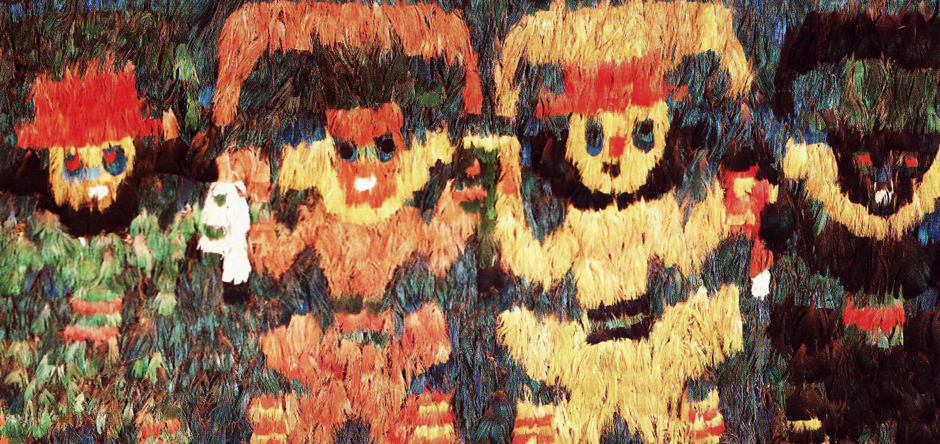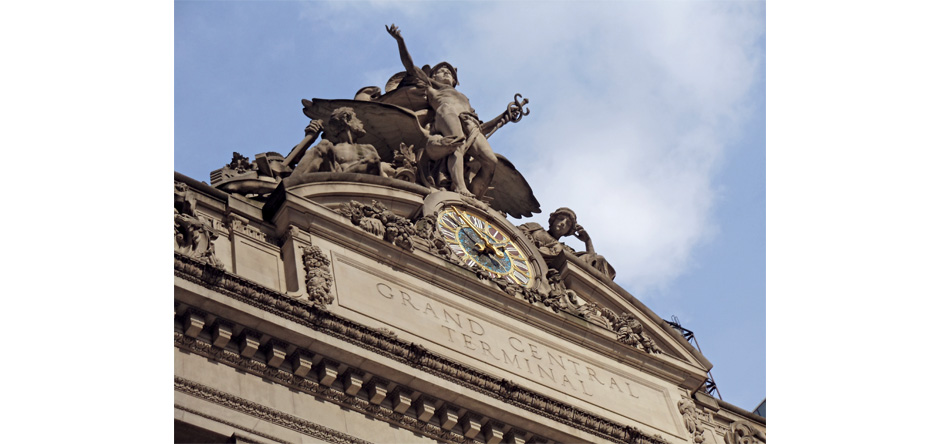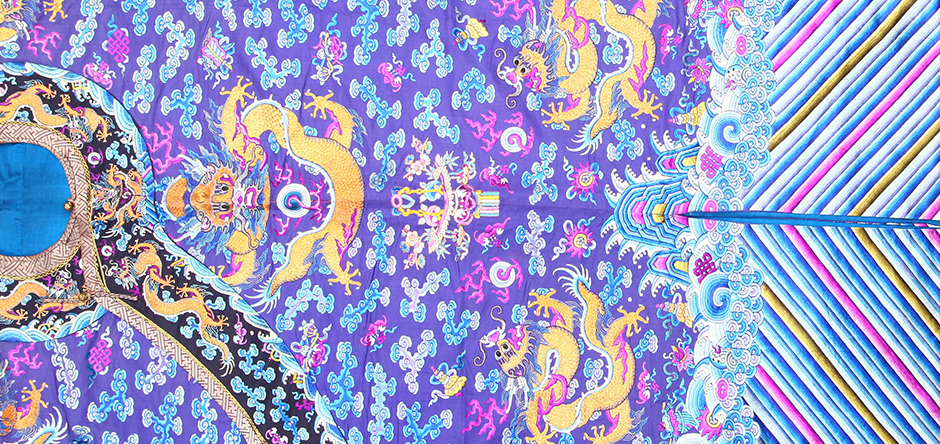Photographs courtesy of James W. Reid.
The passion for design, like sex, was apparently programmed into the DNA of homo sapiens. This has been observable since Stone Age artists scratched images on the walls of their cave dwellings. Ancient civilizations obviously found as much pleasure in beautiful shapes and innovative designs as we moderns do.
Case in point: Beginning more than 2,000 years ago, ancient Peruvians in the pre-Hispanic Andean world had already developed the concept of design as well as sophisticated techniques to create original feather textiles, inspired by the flamboyant plumage of exotic birds. Feathers were linked to the concept of flight and, with the unattainable realm of the heavens, birds like the eagle and condor were honored as divine. Feather artwork thus became a vital element in the life and death of ancient Peruvians and remained a vibrant art until the Spanish conquest in the mid-16th century. Alas, the Spanish conquistadors attributed magical-mystical powers to feather textiles and, fearing they would be used against them, banned their creation. As a result, they were tragically lost to the Western world until 19th century archeological discoveries.
Although some of these masterpieces of fine art are scattered in museums around the world, they remained largely undetected by art connoisseurs until a brilliant scholar, artist, adventurer and military hero from Westchester County, James W. Reid, studiously lifted the veil that for 2,000 years had shrouded the enigmatic feather artwork. Reid resurrected these wondrous creations, imbued with the magic and mystery of vanished kingdoms, by publishing a spectacular ground-breaking book aptly called “Magic Feathers: Textile Art from Ancient Peru,” published in 2005 by Textile & Art Publications in London. This weighty 12-by-14-inch scholarly work presents us with a wealth of authoritative, contextual information and 133 illuminating illustrations of these jewels of feather design, depicting stylized humans and zoomorphic figures as well as fantastical and celestial bodies related to cosmic phenomena. “Magic Feathers” discusses the art of feather textiles from both an aesthetic standpoint and as a reflection of the cultures that created them. The superb corpus clearly demonstrates the level of excellence attained by ancient Peruvians in feather art.
Aside from the sheer beauty of these feather textiles, they are astonishing for two reasons. First, there’s the amazing 20th century Modernism of their figurative, pictographic and abstract iconography, which was created simultaneously, unlike the progressive evolution of Western art from realism to abstraction. Some creations bear an uncanny resemblance to works of 20th-century artists, such as the figures of Jean Dubuffet, Paul Klee and Joan Miró as well as to the pictographic designs of Joaquín Torres García — who acknowledged how the iconography of textiles inspired his “Universal Constructivist” works — and the Abstract Expressionism and color field painting of Mark Rothko.
Second, the Peruvian artists created “collages” thousands of years before Pablo Picasso and Henri Matisse attached papers to canvas to create a three-dimensional effect. Yet the eclectic designs of these feather pieces were created between about 500 B.C. and 1532 by ancient cultures most of us have never even heard of like Paracas, Nazca, Wari, Chimu, Chancay, Chincha Ica and, finally one we all know, the all-powerful Incas.
The populace in these ancient kingdoms regarded feathers as supremely prestigious emblems and used them for a variety of spirited religious and ceremonial functions, as well as honoring — in life and death — the royals who wore them. Miraculously, these fragile artworks survived in fine — often pristine — condition due to their concealment in impenetrable underground tombs. Deceased royal and elite personages were wrapped in feathered tunics, adorned with chest ornaments, cloaks and headdresses and buried, along with a beautiful variety of ritual items to accompany them on their final journey. The mummified bodies were also bundled in feathered textiles before they were laid in sarcophaguses.
Author Reid is a tall, striking-looking gentleman, who, off-screen, has experienced more “Indiana Jones” adventures than Harrison Ford on-screen. He is a decorated veteran of both the Korean and the Vietnam wars. Before he and his beautiful wife, Riet, moved into their gracious home in Hartsdale, they lived for much of the past 30 years in Argentina, Peru and Bolivia, Reid being first assigned to the U.S. Embassy in Buenos Aires in 1969 and subsequently holding a senior post in the American Embassy in La Paz until 1976.
Reid’s impressive academic background includes Winchester College in England, Princeton University (BA) and Stanford University (MA) as well studies in Paris and doctoral work at the University of Buenos Aires. He studied art at the Académie de la Grande Chaumière in Paris and has exhibited his own vivacious portraits and landscapes throughout the world. In 1972, he was elected a lifetime member of Paris’ Salon d’Automne and was later elected a member of New York’s prestigious Explorers Club.
A “man for all seasons,” Reid is the world’s foremost authority on the iconography and design patterns of Peruvian textiles and a specialist on the art, archeology, anthropology and history of ancient South America. In addition to a fluent knowledge of Spanish, French, Russian, Portuguese and German, he speaks and reads Quechua, the language of the Incas still used today by millions of highland Andean peoples. He used this knowledge to study pre-Columbian myths, legends, traditions and poems. He also trekked, on numerous expeditions, to dangerously remote high Andean valleys where he befriended and learned from actual living descendants of the earliest feather artists, whom he was delighted to discover were mostly women. In fact, the designs created by these Andean pre-Columbian women artists are probably the most dramatic example of ancient female culture bequeathed to posterity. This experience instilled in Reid a profound understanding of the bewitching subtle use of feathers and enabled him to decipher the symbolic codes woven into feather artwork.
Reid’s background also contributed to his unique approach to ancient textiles. As he once explained to me while sipping Champagne by a roaring fire in his comfortable living room adorned with his own vibrant paintings of his wife and grandchildren, “I see these textiles as great works of creative aesthetic design inspired by a profound religious faith, which imbued them with magical connotations. It was this transcendental faith,” he emphasized, while throwing another log on the fire, “rooted in a synergistic relationship with the environment and heavenly deities, which impelled Peruvian weavers to create brilliantly innovative graphic compositions worthy of assuming a place in the historic pantheon of the world’s great art.”
Reid has been a visiting lecturer at prominent institutions and universities in Canada, America and Europe and has made numerous cultural presentations aboard international cruise lines. His international essays, articles and 16 major books, including “Textile Masterpieces of Ancient Peru” and the recent “Pre-Columbian Peruvian Textiles, the First Modern Art,” have been published worldwide, and earned him presidential decorations, the most recent from Peruvian President Alan Garcia.
As Reid often says, “The design of these feather textiles are highly imaginative and exciting. The unique texture and brilliant outbursts of color continually dazzle the spectator.”





Dear Ms Topping,
I am trying to find out more information about James W. Reid. My parents were friends and collectors of a James W. Reid’s art from the 1960’s and I am curious if it is the same person that you wrote about in this article.
I look forward to hearing from you.
Stefanie Pollard